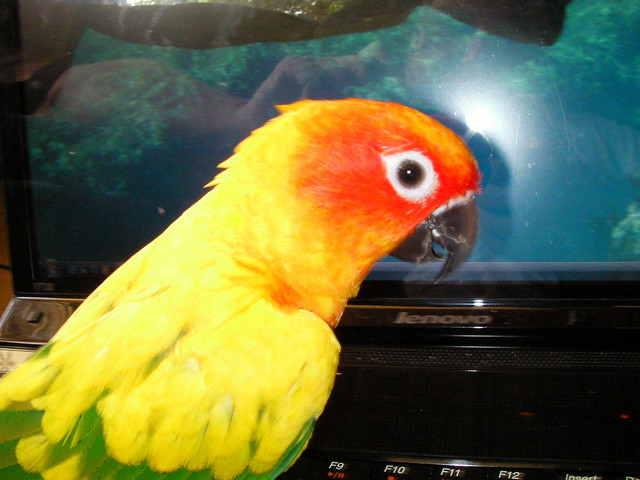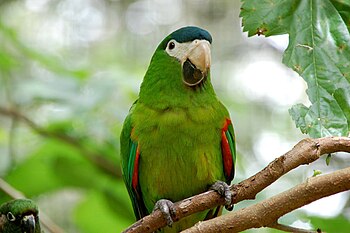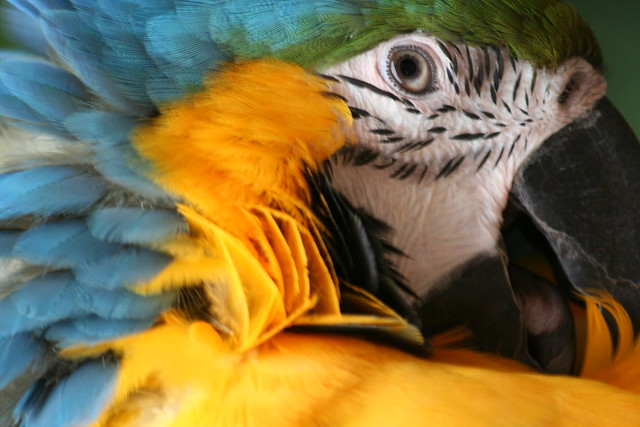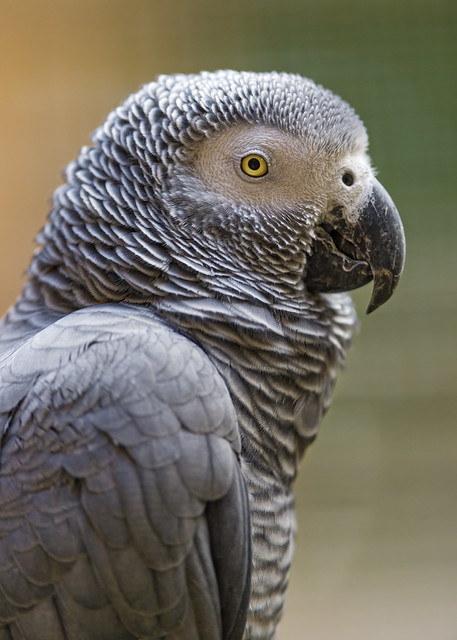 |
| Imperial Amazon (also known as the Imperial Parrot and Sisserou Parrot) (Photo credit: Wikipedia) |
Answer: Over 9000 species. And out of which the parrot group itself consists of about 330 species and are particularly popular with pet owners.
If you are also thinking of keeping a pet parrot, read below for the tips I am going to provide for selecting the suitable parrot for yourself and the family.
Parrot Buying Tip (1) -- Buy a young parrot
Rearing a new parrot from young helps to facilitate taming. An older parrot can also be tamed just that it takes more time and patience. However, the tricky part is in determining the age of the bird. However, some basic things to look out for are the scales on its legs, the color of the eye and the color of the body. A young parrot often has a dark gray iris that becomes white or brown when it grows up. The scales of young parrots are also much smoother than that of mature birds. Their body color also appears initially to be much duller than when they are matured.
The best option is to buy one which is newly born which is independent of its parent.
Parrot Buying Tip (2) -- Choose the right species of parrot
Do you know the characteristics of the parrot you are interested in buying?
Do they
- -make tremendously loud voices which can cause huge disturbance to the neighbors?
- -have powerful beaks that can damage your personal belongings if let free in the house?
- -need special nutritional foods? Some birds such as the lorikeets need special foods since they feed on nectar. This also relates to cost.
Parrot Buying Tip (3) -- Check the condition of the parrot
If possible, ask for a certified health certificate by the veterinary so that you have an assurance of buying a healthy parrot home. If that is not available, don't worry, you can check out the below factors for some tell-tale signs of the conditions of the bird.
i) Inspect the living conditions of the bird. Dirty or poorly maintained perches, food, and water containers, excess fecal wastes in the cage, all show poor management of the birds leading to bad health. The eyes should also be clear and not showing any discharge. Also look out for any swelling signs which will indicate rising health problems.
ii) The bird feathers should be tidy and clean. Any bald areas on the parrot body could indicate an infection which is very unsightly and may not be able to cure, or it may also be due to the parrot being a feather plucker which means it is getting very boring. This activity may stop when you start to show it more attention. Then again, it is better to stay clear of such birds, since they could be carrying diseases on their bodies which you don't want it to spread to your family members.
iii) Support the bird on its back and check the vent for cleanliness. Also, check for any crusty appearance on and around the beak which could indicate a mite issue subjecting from unclean environments.
iv) Also feel the flesh on both sides of the breastbone, and ensure it is solid and not hollowed. If protruding, it also indicates a nutritional deficiency and should be avoided.
v) Ensures all claws are there. There should be 2 toes pointing forward, 2 facing backward. Check for any protruding leg scales as they could be potential sources for leg mites.
vi) Beware of birds that act aggressively towards you when you try to approach it. Symptoms include fluffing up feathers and eyes dilating when you try to move your hand close to it. These birds are probably not young birds, and they will likely bite you if you cross its safety zone.
Parrot Buying Tip (4) -- Buy from reputable, reliable sources
Buying from well-established and reputable pet shops assures you the best quality services, and often the pets you are buying through them have been certified to be in good health before they release it out for sale.
Avoid open markets, and buying through mail order. It is always good to see and feel what you are buying so that you don't regret your buying decisions later. If you don't, how do you implement parrot buying tip 3?
Conclusion
To summarize, it is great to have parrots as pets, as they can be a good source of fun and companionship. However, it is important to know some essential tips on selecting and buying the right parrot, and this can be categorized into 4 great tips namely to buy a young parrot, choose the desired parrot species, check the condition of the parrot, and always buy from reputable pet shops.











